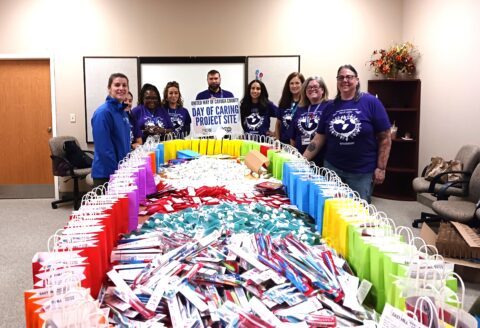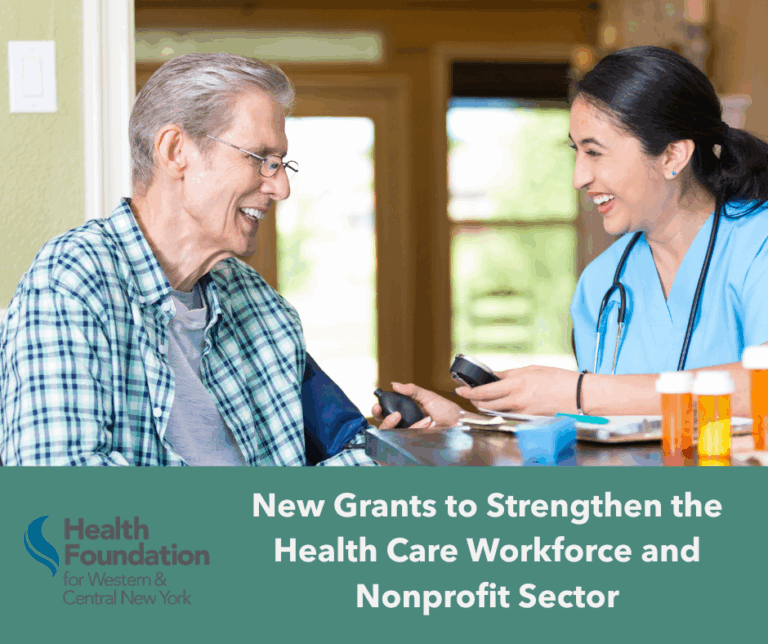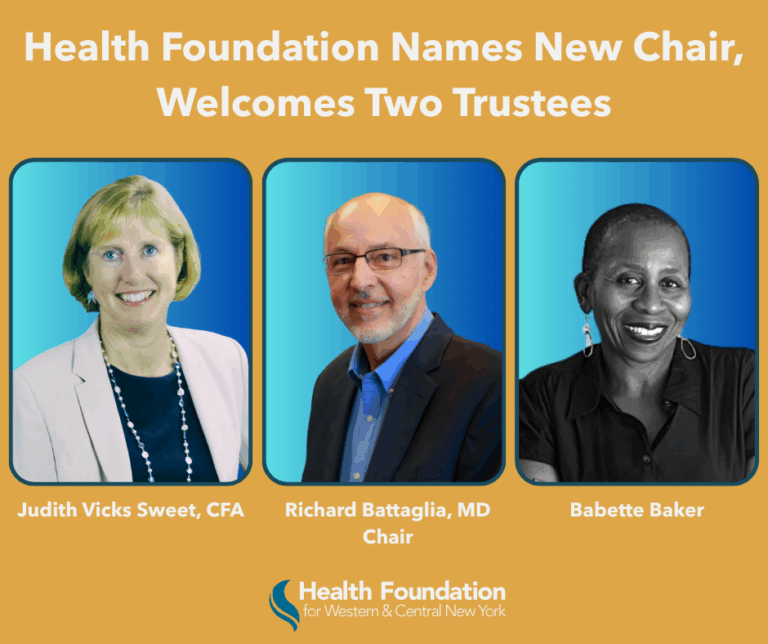Key takeaways
The challenges:
- Not enough dentists
- Long waiting lists
- Lack of preventive care
Possible solutions:
- Including dental care coverage in health plans
- Approving the practice of dental therapists in New York State
- Streamlining the licensing process so dentists from other states and countries can practice in New York
“It’s a dire situation for our patients,” says Karen Jensen of Finger Lakes Community Health in Geneva, New York. As the dental program manager, she schedules care across different sites and knows how long a person has to wait for an appointment. More often than not, it takes too long. A patient who’s experiencing tooth pain, for instance, might not be seen for a month and a half.
Chief Dental Officer Tony Mendicino—affectionately referred to as Dr. Tony by his patients—echoes Jensen’s concerns. “Covid was the start of the downfall,” he explains. While most other clinics closed, Finger Lakes Community Health, a Federally Qualified Health Center (FQHC) located between Rochester and Syracuse, was one of the few that stayed open. Yet even after the Covid-19 pandemic was under control, many clinics couldn’t reopen because of a shortage of dentists. The facilities that have remained operational are feeling the pressure. “We have enough hygienists, but we don’t have dentists,” Mendicino says. The waiting list for new patients peaked at around 4,000 during the Covid-19 pandemic—it’s even higher today.
The pandemic magnified the everyday challenges of practicing in an under-resourced area. Mendicino and his two fellow dentists work long days and see roughly 45 to 50 patients, most of whom are on Medicaid. Because many private dentists don’t accept Medicaid insurance, the dentists at Finger Lakes Community Health and other FQHCs are performing a critical service for their communities.
Whether the barrier is transportation, cost, or both, many rural residents can’t keep up with routine dental cleanings, so by the time they come in, the treatment they need is extensive.
Jensen describes eight recent patients, all between the ages of 17 and 48, who showed up at the clinic with a cavity in almost every tooth. And then there’s the predetermination process, complicating an already-difficult situation. Approvals typically take 4 to 6 weeks, and according to Mendicino, some patients might wait an entire year for a procedure like getting dentures placed.
Despite the challenges, Mendicino and Jensen persevere. They both know the exasperating hurdles and the unique rewards of a rural practice. He’s been working with rural agricultural populations for almost 40 years and has been with Finger Lakes Health for nearly 20. He reminisces about an easier time, when his clinic had 10 dentists on staff and patients could be seen relatively quickly. Jensen sums it up this way: “We’re all feeling the same stress and pressure, and we’re trying to do the best we can with what we have.”
A statewide problem
The Finger Lakes region isn’t alone in its struggle to attract qualified dentists and meet the needs of underserved populations. In 2023, 92 percent of rural counties in New York State were partly or fully designated as a Health Professional Shortage Area (HPSA) for Dental Care. An HPSA is a geographic area, population group, or health care facility that the Health Resources and Services Administration (HRSA) determines as having a shortage of health professionals.
Maria Alvarez, executive director of the New York StateWide Senior Action Council, and Stefania Buta, program development coordinator, are keenly aware of the dental deserts across the Empire State. “Across any community, dental care seems to be a big issue,” Alvarez says. The StateWide team conducted an informal survey on social media to better understand some specific factors.
Of the roughly 3,000 people who responded, about 40 percent said that they couldn’t afford dental care, and 13 percent said they only received dental care through their local emergency facility. Dental supplies like toothbrushes, toothpaste, and floss were deemed too expensive by 22 percent.
Alvarez and Buta immediately understood the economic factors driving these survey responses. In recent years, consumer prices have risen but incomes have dipped or stayed the same, leaving families who already live paycheck to paycheck with even tougher decisions. Can we afford a visit to the dentist? Do we pay rent or buy food? How will we pay for our prescription medications? If it’s a choice between getting an asthma inhaler for a young family member or stocking up on dental hygiene supplies, for instance, the answer is clear.
The StateWide team decided to take action. They reached out to cross-sector organizations—from the New York State Dental Association to private companies—to solicit donations so they could hold special “Dental Days” and give out free toothbrushes and toothpaste. For the past three years, they’ve also partnered with schools, libraries, and community organizations to distribute free oral hygiene kits and information about community resources in numerous New York counties. “In any of our tabling events, the toothpaste and toothbrushes are the first things to get picked up,” Alvarez says. “We know the families want them.” By the end of 2023, Buta estimates they will have given away 15,000 oral hygiene supply kits in a single year. StateWide is grateful for the donations from the New York State Dental Foundation, the JM Murray Center, the Henry Schein Foundation, and Colgate-Palmolive.
Start healthy habits early
Dental hygienist Sara Green serves as the community dental health coordinator for Finger Lakes Community Health. She says many residents see access to oral health care as a privilege they simply can’t afford. “It’s much more viewed as a luxury, like getting your nails done or getting a massage.” They might also see tooth decay as something that runs in the family.
She describes meeting a 25-year-old mother whose teeth had all been pulled; the woman assumed her children would lose theirs as well.
Green is involved with several community-based programs focused on young children. Her goal is to reach families as early as possible and focus on preventive care. She works with a school that participates in the federally funded Head Start program and enrolls children as young as 6 weeks old. The infants all receive fluoride varnish on their teeth, and their parents are taught that even the health of temporary baby teeth and the surrounding gum area can affect future permanent teeth. She also works with students at a school that doesn’t participate in Head Start. The children there begin attending when they’re 3 or 4 years old. Because the students are a few years older, Green can already see the effect of some unhealthy habits. These kids—including a 4-year-old with 16 cavities—have significantly more tooth decay compared to their peers in the Head Start school.
Green also runs a program called Brushing for Two. She conducts telephone outreach to pregnant women, including both first-time and repeat mothers. When the baby turns one year old, she schedules the infant’s first dental appointment. Green shares information with the moms on every aspect of good oral hygiene, explaining the dangers of drinking soda pop and eating a lot of sweets. She describes the process of decay, including how gastric acid attacks teeth and wears away the enamel. “I really try to push the nutrition component,” she explains. She suggests drinking water in between meals and saving beverages like juice or milk for mealtime. Lack of dental care access means parents don’t always have up-to-date information on preventive care for their children. Green hopes to move from phone calling to videoconferencing, which should enable a more personal touch.
The outlook
Dental care plays a critical role in protecting not just oral health, but overall well-being. That’s because there’s a strong link between dental care and other health concerns. One of Mendicino’s patients, for example, needed a hip replacement. The orthopedic surgeon instructed the patient to undergo dental work first. Bypassing that crucial step could have increased the risk of infection during the hip procedure.
Neglecting oral hygiene can also contribute to other, very serious medical conditions, including an increased risk of a heart attack or a stroke.
And yet dental care is shaped in part by a systemic approach that compartmentalizes health care. Health insurance plans often view dental coverage as supplemental. Original Medicare, for instance, doesn’t include dental care. Alvarez laments that “the system is not set up for everyone to access what they need.”
If the script has any possibility of being flipped, one sure answer is early intervention. Mendicino wishes programs like Head Start could be expanded. A different proposal, already approved by the New York State Dental Association, is currently waiting for approval by the New York State Department of Health. If approved, it would allow a parent to apply fluoride varnish to their child’s teeth during a telehealth appointment.
Another idea is to use dental therapists as part of a dentist-led care team. Dental therapists are licensed dental care providers who perform some of the most common procedures, including preparing and filling cavities. Currently only 13 states authorize dental therapists to practice—New York is not among them. Mendicino believes that it will be at least another four to five years before dental therapists are approved to work here.
Jensen would like to make it easier for foreign-born dentists to apply their medical expertise in their new country. She tells of an Egyptian couple whose skills are being underutilized. Both the husband and wife were longtime dentists in their native country, but here in the United States, they can’t practice dentistry. To do so, they would need to go through a costly three-year program, essentially studying techniques they already know.
 Photo courtesy of the New York StateWide Senior Action Council
Photo courtesy of the New York StateWide Senior Action Council
Like the team at Finger Lakes Community Health, Alvarez and Buta are frustrated but undeterred. They know just how quickly a community can come together in times of need. They describe their recent collaborations with Meals on Wheels locations in several central and western New York counties. Volunteers answered the call to help distribute meals and dental supplies to older adults and other homebound individuals. For the United Way of Cayuga County’s Day of Caring, representatives from local organizations and community volunteers assembled and distributed bags of dental supplies and other resources to residents of all ages throughout the county. “There’s so much involvement in this, and it really speaks to the strong community,” Buta explains.
Until the system has been transformed, dentists, hygienists, advocates, and volunteers committed to health equity will need to use every available resource to close the dental coverage gap.



